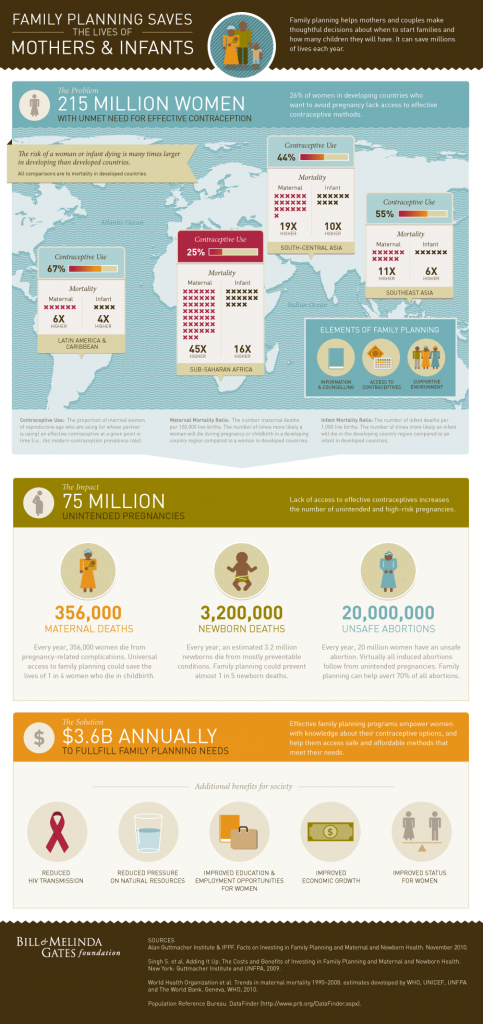Why the Family Planning Summit Should Support Safe Abortions
Dr. Gary L. Darmstadt’s editorial in the Huffington Post summarizes the five guiding principles of the upcoming Global Summit.
1. Unprecedented political commitment and resources are needed to improve the lives of women and girls in developing countries.
2. Women and girls in poor countries have equal rights as those in rich countries to plan their families, and will be free from discrimination or coercion in decisions on contraception.
3. The Summit will sustain voluntary family planning programs within the continuum of care for women and children, including sexual and reproductive health and rights.
4. Programs supported by the Summit will be country-owned and led, and focused on national priorities, conditions and needs.
5. All stakeholders will be accountable for working together to achieve the goal of the Summit.
In addition to this, the Bill and Melinda Gates Foundation has created an info-graphic to show the unmet needs for family planning: globally 215 million women have little access to contraception. This results in at least 75 million pregnancies, 356,000 maternal deaths, 3,200,000 thousand neonatal deaths, and 20,000,000 unsafe abortions. The foundation will channel 3.6 billion dollars annually to meet these needs, and enable women to plan their pregnancies.
However, a summit on family planning is incomplete without a comprehensive discussion on safe abortions. Though the info-graphics acknowledges the number of unsafe abortions, Melinda Gates made it clear this April that the foundation will not address the need to increase access to safe abortions. Instead, Ms. Gates hopes that access to contraception will cut the need for abortions by 70%.
There are two fundamental flaws to this view. Contraception is not always successful, and several women will still need abortions. If the access to this service is not discussed as a right, then these women might be subject to local stigma and restrictive laws, and forced to seek unsafe abortion. Secondly, it will take time to ensure that contraception is understood as a woman’s right. In the meantime, several unwanted pregnancies will lead to unsafe abortions. More lives can be saved if both contraception and safe abortions are made available simultaneously.
It is also dangerous to create a situation in countries where the systems will be flooded with supplies during the project period, but not as accessible beyond that. This is particularly possible if it does not get mainstreamed and integrated within comprehensive public sector programmes in each country. There will be a glut followed by shortages, if the capacity building of systems is not an integral part of the project. Documentation, budgeting, procurement, stock management are all key components to ensuring long term success of contraceptive supply beyond the project period.
The agenda also raises other questions. Will this perpetuate vertical programmes for Family Planning which do not integrate safe abortion services and other reproductive health programmes? Will it focus on contraception for women, and once again lead to an omission of men from this intervention and dialogue? We should find out the answers to all these questions in only 9 days. But as the clock ticks one cannot help but wonder if the Gates Foundation could open itself up to the possibility of including safe abortions on the agenda as a logical backup to those whose contraception fails.







